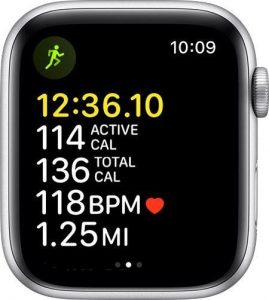How useful is the Apple Watch for Seniors?
Of the various devices used for tracking health and fitness, the Apple Watch is perhaps the most well-known. With a variety of sensors enabling easy fitness tracking and reminders, users can make positive changes to their daily lifestyle and health. Apple Watches allow seniors to detect falls and check advanced metrics such as electrocardiograms (ECG/EKG).

What are the different models and their features?
Considering the hefty price tag, the number of Apple Watch wearers is surprising. Like Apple’s iPhone, a new model of the Apple Watch comes out almost annually, improving and building upon the previous model’s features. From basic properties such as measuring steps to environmental sound levels and VO2 max, the wearable device has a reason for its fan-following. Third-party apps can connect to the device as well, creating a centralized approach to tracking all things health-related through Apple Health.
There are three main variants of the Apple Watch, and they roughly follow the good/better/best scheme. As of today, these are Apple Watch 3, Apple Watch SE, and Apple Watch 7. All have straps and bands which can be replaced with custom colors and finishes. The retail prices on Apple’s website are shown below but it is sometimes possible to get lower prices during sales.
Apple Watch 3 has a Retina screen in 42 mm or 38 mm sizes. It retails from $199 onwards.
Apple Watch SE, which is the next level up, adds the important feature of fall detection. It has a 30% larger screen area, and also offers cellular connectivity. It retails from $279 onwards.
Apple Watch 7 is the top-of-the-line model, with 50% larger screen size compared to Apple Watch 3. It comes with very popular apps such as Blood Oxygen and ECG on top of the features which exist in the Apple Watch SE. It retails from $399 onwards.

How is it helpful for seniors?
Seniors have specific needs, which go beyond fitness and activity tracking. Two of the Watch models support Fall Detection and automatically call one preconfigured emergency number when a fall is detected. The companion iPhone which connects to the Watch also offers a walking steadiness score, which proactively identifies the likelihood of a fall. In addition, Apple Watch detects irregular heartbeat, ECG/EKG, and SPO2 levels. These can give seniors a quick assessment of whether their heart is working fine, or they need to seek immediate attention. Recently, Apple has also introduced a feature to share Apple Health data of a subscriber with other designated users who also have an iPhone.
Another thing that Apple does very well is the hassle-free install process and the ease of integration with Apple Health on the iPhone.
Are there any cons?
As a downside, the Apple Watch is much more expensive than other gadgets such as Fitbit that offer the same functionality. Another very important con of the Apple Watch is the shorter battery life, which forces most users to only wear it during the day and charge it at night.
Conclusion:
In summary, the Apple Watch is a very solid, good-looking, and well-featured piece of tech for seniors. The best model will depend on the relative importance of health vs. fitness. For someone who is very healthy and primary fitness-focused, the Apple Watch 3 is sufficient. For someone who is interested in the maximum number of health metrics, the Watch 7 is the ideal choice.
More information and Setup Guide:
There is a large amount of information available about Apple Watch features on Apple’s website https://www.apple.com/watch/ and the setup processes on online sites such as Youtube. To see our own experience configuring Apple Watch SE, click on “Articles” on the top and download the Article related to Apple Watch Setup.

No comment yet, add your voice below!